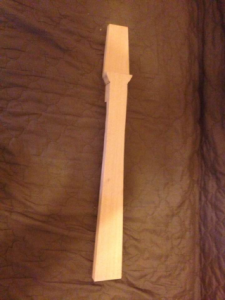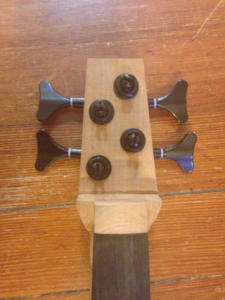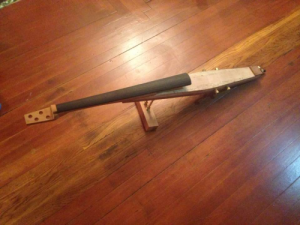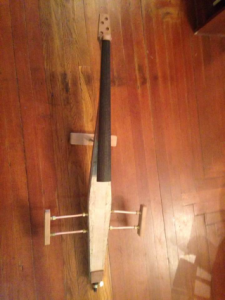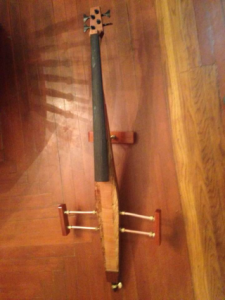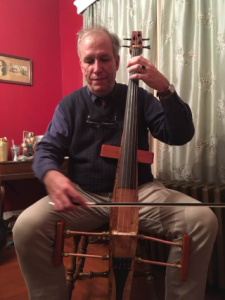Did you ever wonder what oscillator sync does in subtractive synthesis? Simply put, in sync mode oscillator 2 restarts its waveform every time oscillator restarts its waveform. That’s pretty simple to understand, but it is a bit trickier to visualize, and harder still to try to predict what the auditory outcome will be.
Thus, I have done a test of oscillator sync using Logic Pro’s RetroSynth. Each test involves two passes, each of which is 16 seconds long. Both instances use 55 Hz sawtooth waves (A1, where middle C is C4). In the first pass, we are listening only to the synced oscillator. In the second pass, we hear a 50/50 mix of oscillator one and two.
In both cases however, I am automating the sync value. For all intents and purposes, each pass starts out with the frequency of the synced oscillator matching that of oscillator one, and gradually increasing until at the end of the 16 second pass, the frequency of oscillator two is about sixteen times the frequency of oscillator one.
Watching the audio while it plays in Audacity (below), we see on the first pass, long period sawtooth waves gradually shorten into shorter period sawtooth waves. This change will be audible in an apparent rise in frequency. On the second pass, you’ll see these increasingly shorter period sawtooth waves superimposed on the long period sawtooth wave of the first oscillator.
As we watch a spectral analysis of the sound displayed in an EQ plugin on the output channel of Logic Pro (below), we will see each successive harmonic of the 55 Hz fundamental rise in volume as the first pass progresses. You’ll notice that the rate of those harmonic peaks increases over the course of the pass. This illustrates that the sync knob of RetroSynth is exponential in nature, that is it moves up the frequency spectrum using consistent octaves, not consistent frequency bands. For instance in first octave of motion (55 Hz through 110 Hz), we have two harmonics represented (55 Hz & 110Hz). In the second octave of motion (110 Hz- 220 Hz), we have three harmonics represented (110 Hz, 165 Hz, and 220 Hz). In the next octave (220 Hz through 440 Hz) we have 5 harmonics presented (220 Hz, 275 Hz 330 Hz, 385 Hz, and 440 Hz), and so forth. Thus, more harmonics are presented in the same span of time, giving the aural impression of speeding up. You should hear these harmonics cycle though the harmonic series. On the second pass, you’ll see the same thing, only with the fundamental 55 Hz tone constantly there, softening the feeling of the frequency increasing a bit.
Ultimately, the increased angularity of the sound waves, as seen in Audacity results in a richer harmonic content (as seen in the harmonic analysis). This demonstrates the point of Oscillator sync in subtractive synthesis, namely to create richer harmonic content than what is available in the basic waveforms of subtractive synthesis.

